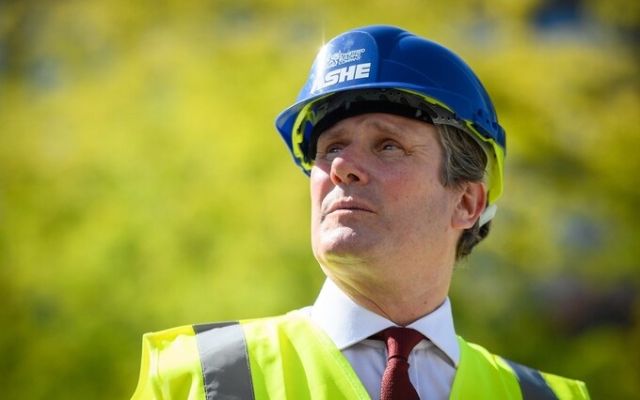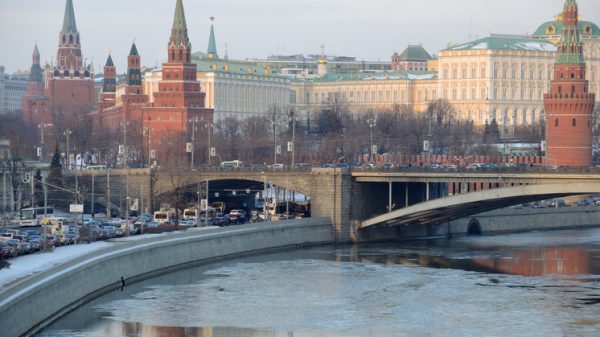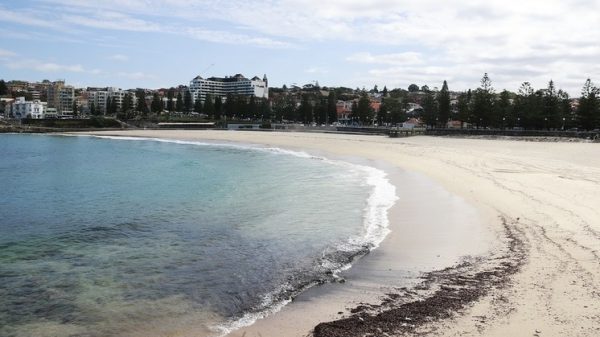 Keir Starmer will give local authorities more powers to build on green belt land to meet local housing needs if his party wins the next general election Photo: Leon Neil/Getty Images Europe
Keir Starmer will give local authorities more powers to build on green belt land to meet local housing needs if his party wins the next general election Photo: Leon Neil/Getty Images Europe
Much of Sir Keir Starmer's landmark plan to «restart Britain's building» sounds familiar.
Sir Keir's plan to build 1.5 million homes in five years equates to 300,000 properties per year — the same target the Conservatives set for themselves in their 2019 election manifesto. The Labor leader's plan to speed up brownfield development echoes Boris Johnson's 2021 Tory conference speech and Johnson's £1.5 billion Brownfield Fund.
But Sir Keir's announcement did contain one big shot of radicalism: green belt development plans.
The once unspeakable idea was softened by the Labor leader declaring that he would only target those parts of it that Sir Keir called it a “gray belt.” Namely, areas of the green belt that are not actually green at all.
“Where it is clearly being used in ludicrous ways, abandoned car parks, bleak vacant lots — not a green belt but a gray belt, sometimes inside the city limits — then it cannot be justified as a reason to hold back our future,” he said in his keynote speech at the conference Labor.
It could be a game changer for housing and the proposal has the Tories spooked. Former Housing Secretary Simon Clarke tweeted: «The risk is that Keir Starmer bypasses us completely.»
The green belt is an urban containment policy designed to stop cities from sprawling and merging, but it also acts as a gastric band for construction. And that's huge.
More than half of the country's local authorities have green space on their territory, totaling 1.7 million hectares. This represents 12.5% of England's land area, according to planning consultants Lichfields.
This means that there is dedicated land around cities such as London, Manchester, Bristol, Bournemouth, Newcastle, Cambridge, Birmingham and other cities. Liverpool and Leeds, where planning rules make it incredibly difficult to build houses.
In other words, where new houses are most needed, they are the hardest to build.
Jason Laws, planning partner at consultancy Rapleys, says: “The green belt was introduced partly to stop urban sprawl and protect the countryside, but instead it is often used as a barrier to any development, no matter how gray. . sites actually are like that.”
The term «green belt» is often misused, he says.
“It's true that there are areas of land classified as green belts that are closer to urban wasteland and don't actually hilly. hills, as many expected.”
There are cases when even abandoned plots cannot be developed because they are in the green belt.
Speaking on BBC Radio 4 last week, Sir Keir highlighted the development in the South East, which was built on a former playing field. outside the green belt, not a disused car park inside the green belt.
“This is ridiculous, and we have to be prepared to say we can handle this bulldozer,” he said.
There is currently scant analysis of the exact extent of the gray belt. and what territory it actually covers.
«I don't think you'd necessarily look at parcels of land within that gray belt,» says Anthony Breech, a senior analyst at the Center for Cities.
But the term opens the door to a broader conversation about building on land green belt, says Breach.
“If we're now open to the possibility of thinking, 'What bits of green belt land could we earmark for new homes?', you could build about two million homes within walking distance of stations, in big cities, within commuting distance to work. for suburban living,” says Breech.
New Zealand proposes a plan for how rezoning could boost the housing market.
The entire city of Auckland was zoned only for detached housing until 2016 housing. After rules changed to allow the construction of semi-detached and terraced houses, housing supply increased by 5% in five years.
A steady supply of new properties has helped maintain housing affordability, with house prices rising by 70% nationally during this period, but only 20% in Auckland.
Simon Coupe, senior director at Lichfields, estimates four million new houses could be built if a quarter of green belt land was given over to development.
“That will be 270,000 new homes a year for the next 15 years.”
In contrast, the total number of homes that could be built on former industrial sites across the country is 1.4 million. , according to Lichfields.
It is important to note that brownfield land tends to be concentrated in places where there is less demand for housing, whereas green belt land is in places where people want to live.
Accelerating UK housebuilding could be a lifeline for construction jobs at a time when the sector needs it most. Housebuilding is in rapid decline and is forecast to fall further next year as the sector struggles with high mortgage rates and the end of the Help to Buy lending scheme.
As well as helping property developers, there will also be wider benefits to the economy.
Breach says: “Households will not see the same kind of rent increases that we have seen over the last three or four years. This means they'll have a little more money in their pockets to spend in stores and restaurants.»
More homes will also make the job market more flexible because it will be easier for people to move closer. to his job, Breech says. This could help solve the skills shortage.
But Sir Keir's idea of rebuilding Britain again may be easier said than done. Changing the green belt designation will require new funding for local authorities to help them deal with planning applications. Councils are already facing a backlog of debt and the time it takes to get pre-approval for projects has more than tripled since the 1990s.
Rapleys' Lawes says: «Classifying land is one thing, but how will reclassification 'free it up' or speed up any development? The planning process is still ongoing, and many local authorities have limited resources.»
The fragmented nature of the Gray Belt means a building boom is also unlikely.
Laws says: «Most of the sites that could be considered 'grey' will by their nature be smaller parcels of land between existing development, roads or other infrastructure and are thus unlikely to generate any significant volume of housing on each site.»< /p>
However, Breech argues that Labour's proposals are at least a start when it comes to fixing the UK's broken housing system.
“It may help construction in the short term, for now they are reforming the system,” he said. speaks. “The fundamental problem is that our planning system is very uncertain and very unpredictable.
“But to move to a more rules-based system, like a normal developed country, will take time to get through parliament. . So for now, it might make sense for Labor to think about the green belt as an ongoing priority.»
Whether voters will agree remains to be seen.

























































Свежие комментарии